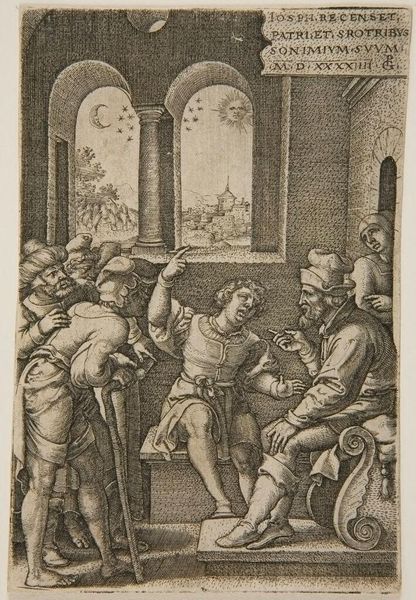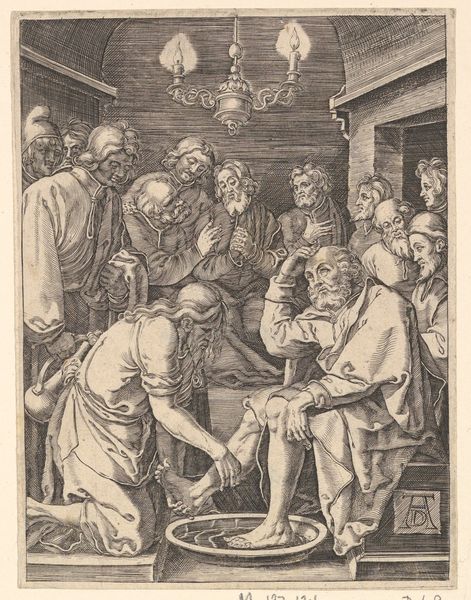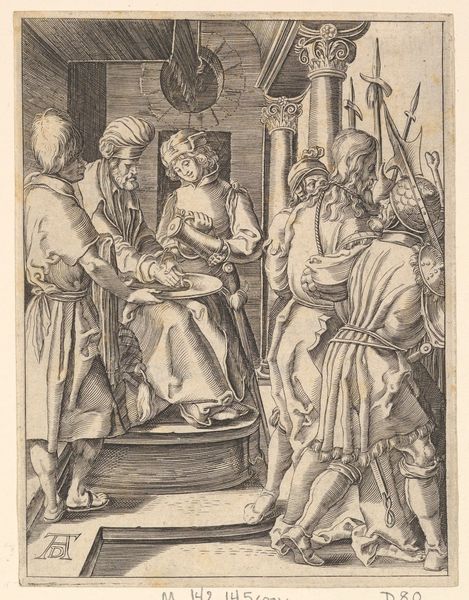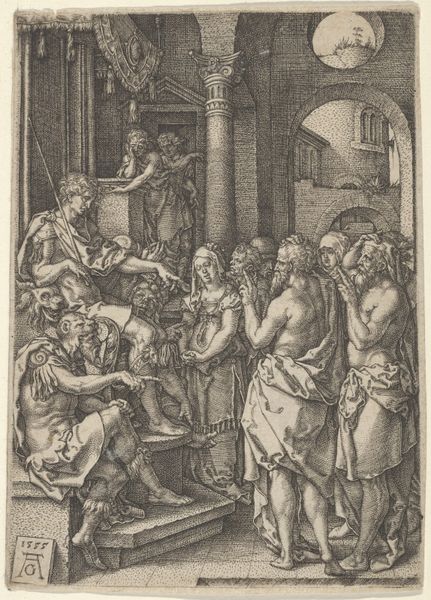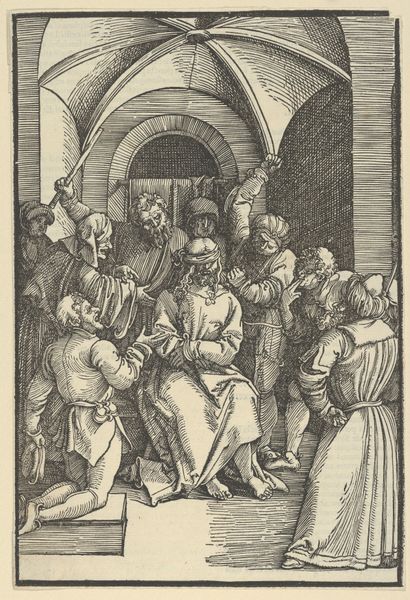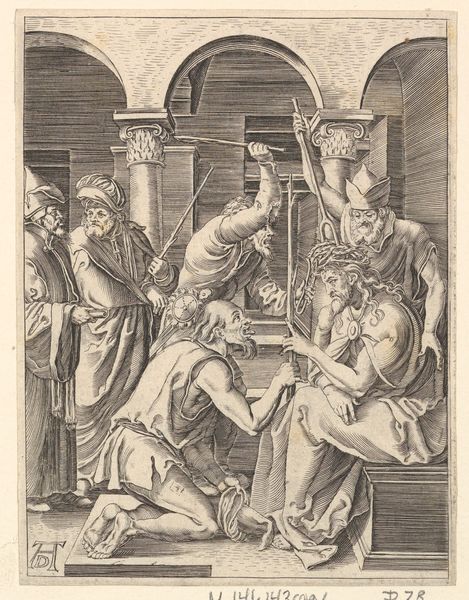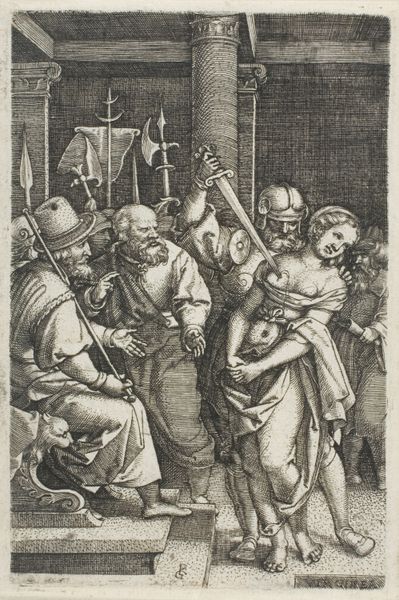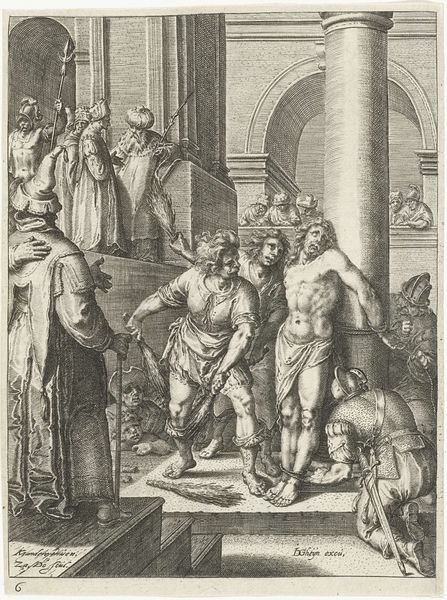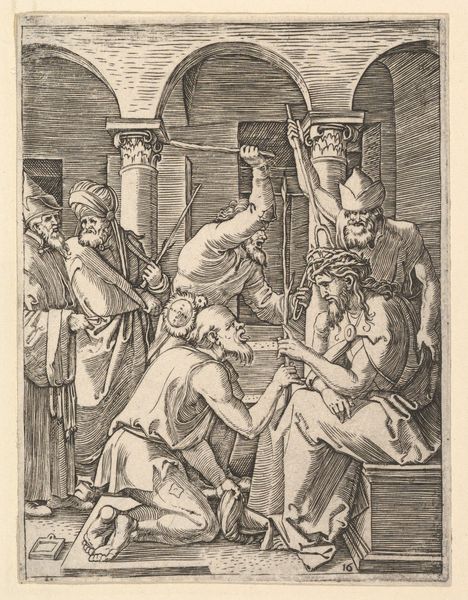
Joseph explains his dream to his brothers and father in an interior setting; the sun, moon, and stars above a landscape in the portal beyond, from the series 'The Story of Joseph' 1544
0:00
0:00
drawing, print, engraving
#
drawing
#
narrative-art
# print
#
landscape
#
history-painting
#
northern-renaissance
#
engraving
Dimensions: sheet: 4 3/8 x 2 15/16 in. (11.1 x 7.5 cm)
Copyright: Public Domain
Editor: So, we're looking at Georg Pencz's engraving from 1544, "Joseph explains his dream to his brothers and father in an interior setting; the sun, moon, and stars above a landscape in the portal beyond." It's incredible the level of detail he achieves with just lines! I am struck by how the biblical story is set in what seems to be a very contemporary, Northern European setting. What stands out to you in this piece? Curator: I'm particularly interested in how Pencz, operating within the Northern Renaissance tradition, utilized the material process of engraving to both disseminate biblical narratives and reflect contemporary social structures. Notice how the labor-intensive nature of engraving – the meticulous carving into the metal plate – mirrors the themes of craftsmanship and production that were central to 16th-century Northern European society. Editor: That's interesting, I hadn’t considered that! Could you elaborate more on the context? Curator: Consider the implications of printmaking as a means of production. It allows for the multiplication of images, and therefore, the broader circulation of ideas. This piece speaks to the accessibility of religious narratives to a wider audience, facilitated by new technologies and distribution networks. Also, reflect upon how this access impacted society. Did it challenge or reinforce existing hierarchies? Editor: So it's not just about the image itself, but about how the means of making it influenced society at the time? The printing press and engraving making narratives far more accessible? Curator: Exactly! The piece itself also reflects class divisions; what type of patrons do you suppose supported an engraver such as Pencz? And where might these images have been displayed or stored? These elements provide important insights into cultural and social stratification of the time. Editor: Thinking about the art's journey – from Pencz's workshop to its various owners and now a museum – really highlights its life as a material object, shaped by production, consumption and trade. Curator: Indeed! It pushes us to reconsider traditional art historical narratives by recognizing that it is not solely aesthetics which matter, but a much more multifaceted picture which must consider historical and social elements.
Comments
No comments
Be the first to comment and join the conversation on the ultimate creative platform.
